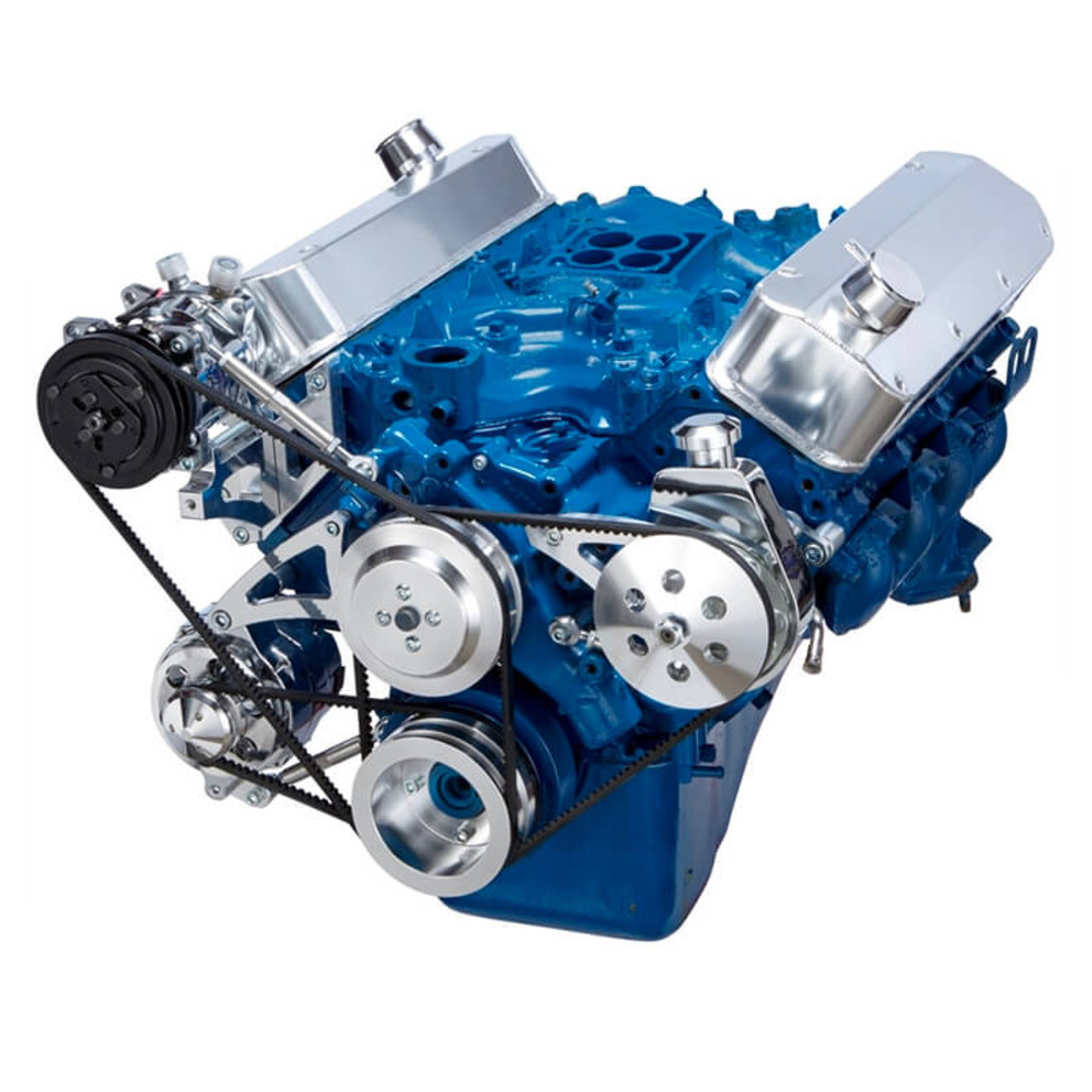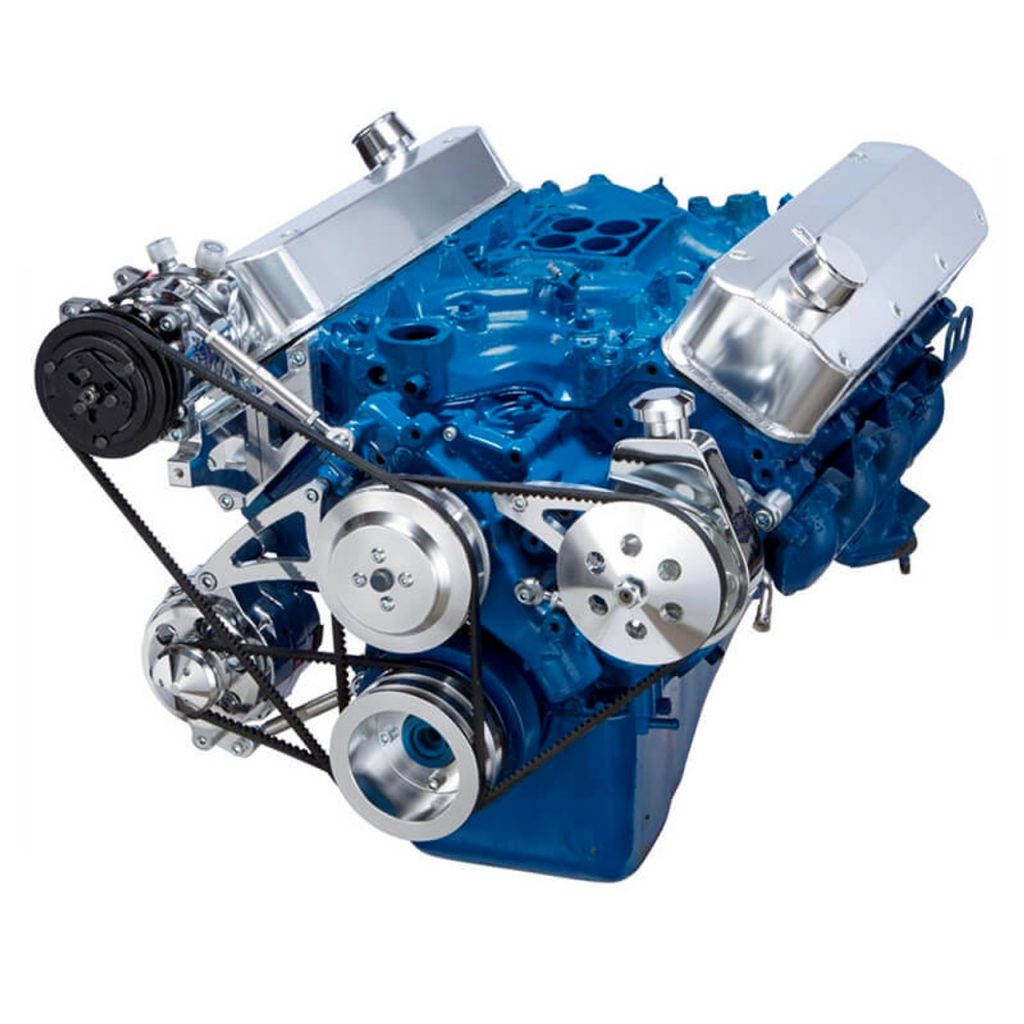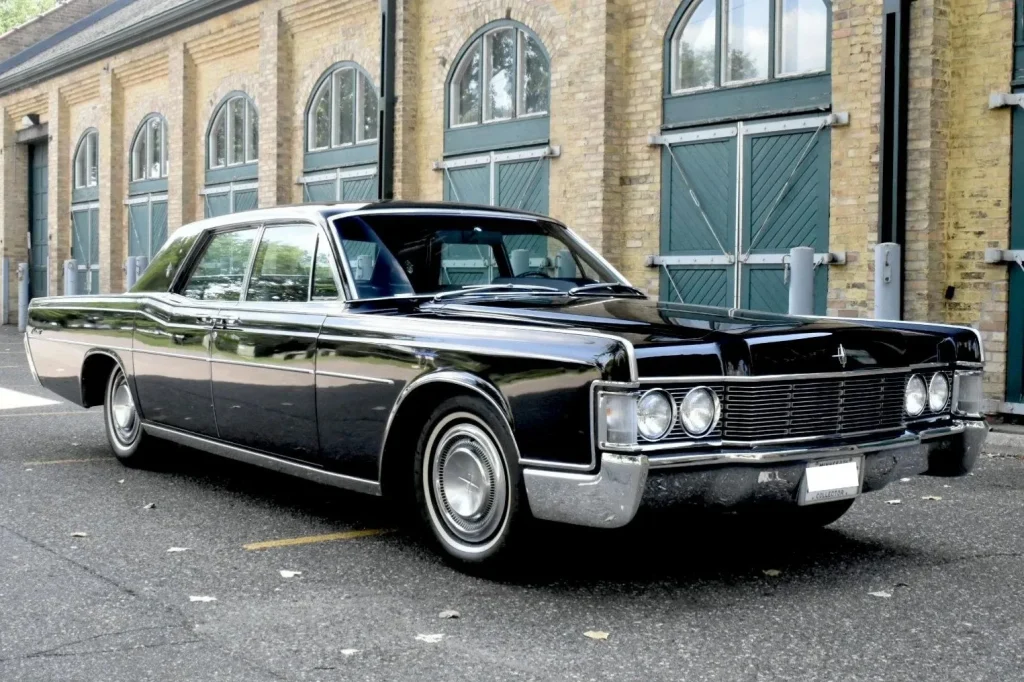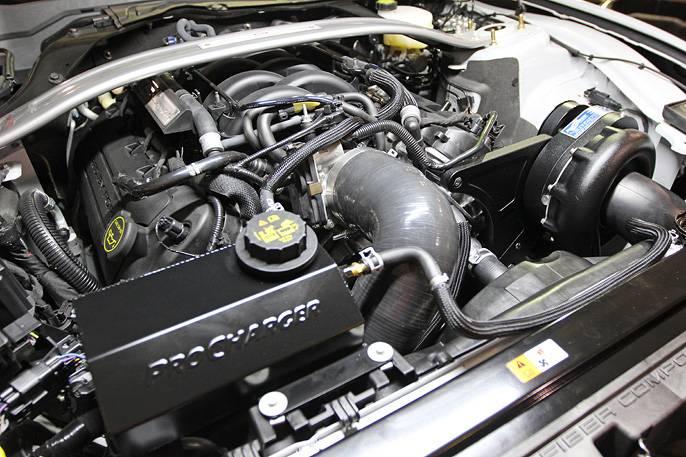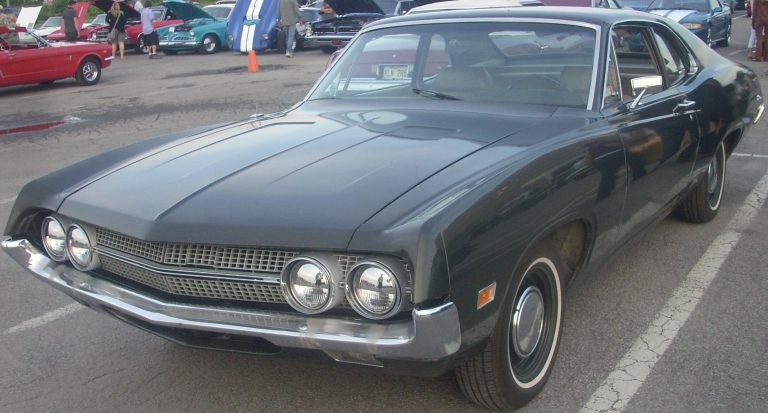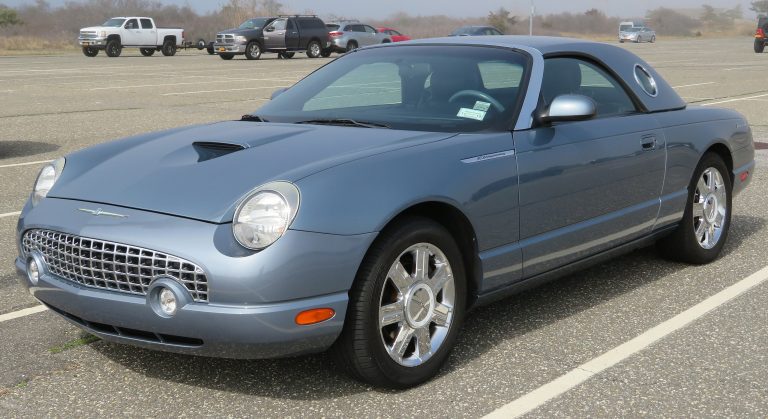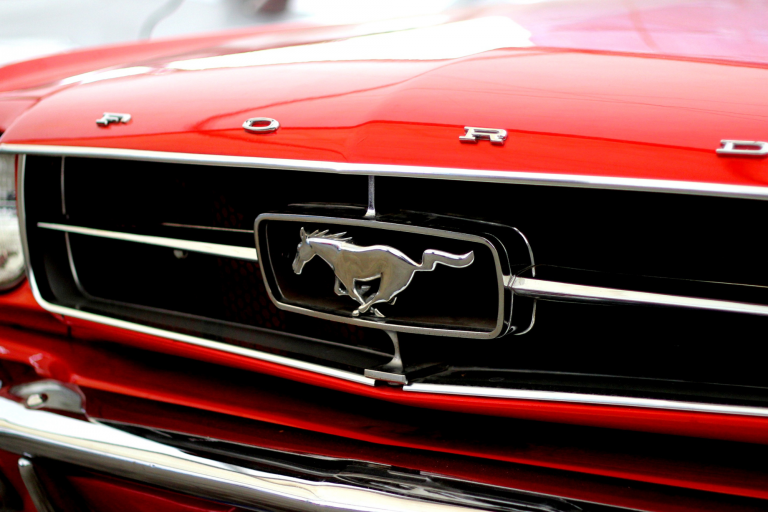Ford 460 Engine Guide

Meet Austin
Austin has been a muscle car enthusiast since an early age with his Dad having a collection including a 1965 Mustang, 1968 Mercury Cougar, and a 1969 Mustang Mach 1 among many others. Austin received a technical writing degree from University of Colorado Denver with the intentions of becoming an automotive journalist. His automotive knowledge, enthusiasm, and hands on experience allow him to craft detailed, accurate, and high-quality articles for the passionate Muscle Car Club audience.
The Ford 460 V8 is the largest displacement engine in the Ford 385 engine series. As the replacement for large displacement Ford FE and MEL engines, the 460 started out as the go-to engine option for big-body luxury cars like the Lincoln Continental. Later in its production cycle, the 460 found a home in utility applications like Ford motorhomes and F-Series trucks. The 460 is often overshadowed by the Ford 429 due to the latter’s placement in cars like the Mustang 429 Boss, but, in reality, the 460 is nearly as capable and doesn’t get the respect that it deserves.
In this guide, we’ll take a detailed look at the Ford 460 big block, covering the engine’s history, specs, reliability, common problems, and popular modifications.
Ford 460 Engine History
In the late 60s, the Ford FE and MEL engine series were approaching their tenth birthday and were in need of a refresh. Obviously, both the FE and MEL engines served the Blue Oval well, as they are still celebrated big blocks to this day. In 1968, the Ford Lima plant was fitted with new tooling and began producing the Ford 385 engine series, starting with 460 cubic-inch and 429 cubic-inch V8 big blocks.
The Ford 385 engine series gets its name from the 3.85” stroke length of most of the engines in the series. However, they are often also called “Lima” engines after the manufacturing plant in which they were produced. Looking at the 385 engines, the 460 V8 is often overlooked in favor of the engines that saw performance applications. If muscle cars interest you, the number ‘429’ should ring a bell. Used in the famous Mustang Boss, the 429 is undoubtedly the most popular engine in the series, with the 460 lurking in its shadow.
In contrast, big-body luxury cars like the Lincoln Continental and Ford Thunderbird initially used the 460 before it found a home as a workhorse in Ford F-Series trucks later in its production cycle. Due to the 460’s monstrous 700lb dry weight, it wasn’t considered a good performance option during most of its build cycle. However, nowadays with so many lightweight performance parts available, enthusiasts are starting to value the 460 as a formidable big-power option in lieu of more expensive and complicated big-block Chevy options.
Ford 460 Engine Specs
| Engine | Ford 460 V8 |
| Engine Family | Ford 385 Engine Series |
| Model Years | 1968-1998 |
| Displacement | 460 cid (7.50 liters) |
| Aspiration | Naturally Aspirated |
| Configuration | 90° V8 |
| Compression Ratio | 8.5:1 – 10.5:1 |
| Bore and Stroke | 4.36” x 3.85” |
| Valve Train | Overhead Valve, 16-valve (2 val/cyl) |
| Fuel System | Carburetor/Fuel Injection |
| Head Material | Cast Iron |
| Block Material | Cast Iron |
| Horsepower Output | 197-365 horsepower |
| Torque Output | 345-388 lb-ft |
Ford 460 Vehicle Applications and Production Years
The Ford 460 is one of the most versatile big blocks in the Blue Oval’s catalog. Throughout its three-decade-long build cycle, Ford utilized it not only in big-body luxury cars but also in a number of trucks, RVs, and vans. The following cars used the 460:
- Lincoln Continental (1968–1979)
- Ford Thunderbird (1972–1976)
- Mercury Cougar (1974–1976)
- Ford/Mercury full-size (1972–1978)
- Ford/Mercury intermediate (1973–1976)
- Ford F-Series (1973–1979)
- Ford F-Series (1983–1997) (F-250 HD, F-350, and F-Super Duty)
- Ford E-Series (1975–1996)
Ford 460 Engine Design
The Ford 460 followed a pretty standard formula for Ford engines at the time. Similar to the FE and MEL engines before it, engineers designed the 460 for strength. It used entirely cast iron construction for both the block and cylinder heads. Despite weighing in at 700 lbs, the 460 is actually still lighter than larger variants of the FE series and the MEL engines. Quite a bit of the 460’s weight comes from its cast iron cylinder heads and cast iron three-inch main bearings. As a result, most enthusiasts nowadays swap out the factory iron heads for lighter aluminum ones, shaving off a couple hundred pounds.
In line with the 385 namesake, the 460 has a 4.36” bore and 3.85” stroke for a total displacement of 460 cubic inches. That makes the 460 the largest displacement production engine in the 385 engine series, outside of the 514 and 572 crate engines. The 460 has a more modern design than previous big block Fords, utilizing thin wall block casting. In most cases, the bore spacing allows for over-bores up to 0.060-inch. The 460’s bottom end is its biggest strength, as a stock factory block is able to hold around 900 horsepower.
Despite being extremely strong, the factory cylinder heads were pretty hit-and-miss. The intake side of the OEM heads featured a cross-sectional oval port design which led to extremely good low-end torque production. However, the very narrow exhaust ports can easily choke the engine when adding performance upgrades like a larger cam.
The Smog Years
One of the main reasons that Ford replaced both the FE and MEL engine series with the 385 was their knowledge of impending emissions restrictions coming in the early 1970s. While the overall design of the 460 lent itself to better fuel economy, it still couldn’t come close to complying with the new emissions requirements of the early 1970s. Over the years, the 460’s compression ratio was tweaked quite a few times to meet increasingly strict emissions requirements, starting at 10.5:1 from 1968 to 1972, and then 8.5:1 from 1973 to 1996.
The decrease in compression killed power figures. While the 460 initially produced 365hp and 485 lb-ft of torque, the switch to SAE net horsepower ratings and newly mandated catalytic converter requirements dropped power output to 212 horsepower in 1973 and eventually as low as 197 horsepower in 1977. Those are abysmal numbers for a big block 7.4L V8. Unfortunately, the power of the Ford 7.5L never truly recovered, hovering between 205 and 275 horsepower until its discontinuation in 1996.
Introduction of Fuel Injection
Throughout its build cycle, the Ford 460 had both carbureted and fuel-injected variants. From 1979 to 1978, the 7.5L V8 used a Holley Model 4180 carburetor. The 4180 is a 4-barrel 600cfm carburetor that was used on a number of Ford performance engines including the 5.0L HO V8 found in the FoxBody Mustang GT.
Ford upgraded the 7.5L to fuel injection in 1988. The main purpose was to improve fuel economy further while also improving reliability and performance. The introduction of fuel injection stabilized the 460’s performance at 235 horsepower and 395 lb-ft of torque. For the final three years of the fuel-injected 460’s production, it received an updated engine management system and a bump in compression which raised horsepower to 245 and 410 lb-ft of torque.
Ford 460 Common Problems & Reliability
Ford 385 big blocks, including the 460 are known for their reliability. The 385 engine was built to last, with most owners easily achieving 200,000 miles or more with virtually no serious issues. The 460’s use in work trucks and recreational vehicles goes to show that Ford felt that it was reliable enough for more rugged applications. Most of the 460’s common problems nowadays are due to the age of the engine at this point. The most common Ford 7.5L V8 engine problems include:
- Broken Exhaust Manifold Bolts
- Timing Chain Issues
- Oil/Coolant Leaks
Broken Exhaust Manifold Bolts
Broken exhaust manifold bolts are one of the most common issues on all Ford 385 big blocks, especially at this point in their life cycle. The problem happens over time as the exhaust manifold continues to expand and contract as it repeatedly heats up and cools. Through that continued heat cycling, the bolts fastening the exhaust manifold to the exhaust ports wear out, eventually leading to the bolt heads snapping off. That’s seriously annoying, as it is a difficult thing to fix.
Weather is another factor that exacerbates the issue, especially if you live in an area with extreme climate changes. If you live in a snowy area, the heat cycling is more extreme, in addition to the added corrosion due to road salt.
Timing Chain Issues
Timing chain issues on old engines are relatively common, especially on high-mileage ones. That is also the case for the Ford 460. Over time, the timing chain develops slack from internal component wear. That isn’t due to anything going wrong, but the continual tension from the timing chain tensioners causes play to develop in the chain.
If the timing chain develops too much slack, it can cause the engine to jump timing, with the chain skipping over the teeth of the timing gears. Since the Ford big block is an interference engine, a jumped timing event can do serious damage to the engine’s cylinder head. In some cases, the incorrect timing can cause the pistons to smash into the valves in the cylinder head, necessitating a rebuilt head.
Since timing chain wear can cause such catastrophic damage to the engine, it is important to replace the timing chain every 70,000-80,000 miles.
Oil/Coolant Leaks
Given that most Ford 460 engines are over 50 years old at this point, it is no surprise that oil leaks are common. The most common oil leaks include the rear main seal, the valve cover gasket, the oil pan gasket, and the oil cooler. Outside of the common oil leak locations, there are also some common coolant leak locations. The timing cover and oil cooler are the most serious problem areas for coolant leaks.
Since the timing cover is aluminum as opposed to steel like the block, over time, coolant can degrade the coolant ports in the timing cover which causes a coolant leak. The timing cover gasket itself can also degrade and leak. The oil cooler is another problem area for the 7.5L. This one has to do with age as well. Over time, the internal parts of the oil cooler corrode, allowing coolant to mix with the engine oil. If you don’t fix the issue quickly, the coolant/oil mixture will ruin the engine.
Ford 460 Performance Upgrades
It’s no secret that the Ford 460 is a woefully underrated performance engine. While everyone flocks to the Chevy small block and other smaller displacement Ford engines, they often overlook the 460 as a viable option for big-power builds. And, that’s actually a good thing. Since many overlook them, Ford big blocks are extremely inexpensive, still enjoy tremendous aftermarket support, and can reliably withstand ridiculous amounts of power. The recipe for a big-power 460 is pretty straightforward:
- Cylinder Head Upgrade
- Intake Manifold Upgrade
- Carburetor Upgrade
- Camshaft Upgrade
Cylinder Head/Intake Manifold Upgrade
The easiest and most cost-effective way to add heaps of power to a 460 build is by upgrading the factory cylinder heads and intake manifold. If you are trying to keep costs low, the factory 1969 iron C9VE or 1970 D0VE cylinder heads are the freest-flowing options that can be picked up for pennies on the dollar. However, they don’t really help with the weight situation.
In addition to horsepower-adding modifications, modifications that lessen engine weight are also very important for the 460. Keep in mind, the long block itself weighs over 700 lbs. Lowering that weight can also result in added performance. That is where performance aluminum cylinder heads and intake manifolds come into play. There are virtually endless options for the 7.5L when it comes to those parts, each with its own benefits and shortcomings. If you want a no-fuss 500 horsepower, I’d recommend the Edelbrock RPM Power Package which comes with an extra-light high-flow intake manifold and cylinder heads that dramatically outflow the stock ones.
Carburetor Upgrade
Choosing the right carburetor is one of the most crucial elements of a 460 power build. While the factory Holley Model 4180 is a decent carburetor for a moderate street build, you’ll need one with more significant flow if you are planning on making big power. If you do go with the Edelbrock Performer RPM kit, a Holley 750 CFM carb is the best option.
Ford 460 Legacy
As a replacement for the Ford FE and MEL engine series, the 385 Lima series introduced new heights in performance, reliability, and versatility. While the 429 is unquestionably the crown jewel in the 385 lineup, the 460 doesn’t get the credit that it deserves. Its versatility is unparalleled, proven by its use in everything from the Lincoln Continental to the Ford F-Series. It is also extremely reliable, with its design causing very few common problems. In fact, most of its issues, including broken exhaust manifold bolts, timing chain issues, and coolant leaks are the result of age more than anything else.
As the largest displacement production engine in the 385 engine series, the 460 has a ton of potential from a performance standpoint. The 460’s bore spacing and tall deck height allow for a ton of stroker kit options to increase displacement significantly. Cylinder head and intake manifold upgrades can dramatically improve how the engine breathes, culminating in a ton of additional power. Not to mention, aluminum heads and manifolds can decrease the engine’s weight by a couple of hundred pounds.
Despite being an under-the-radar Ford engine option, the 460 is one of the best all-around sleeper engines that Ford has ever produced.

